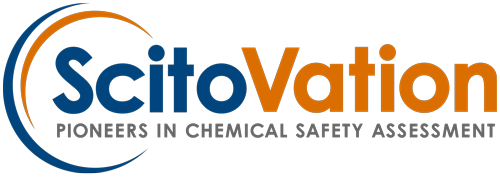What you will learn:
- The utilization an in silico PBK/PD approach to predict thresholds for toxicity allowing quantitative cross-species extrapolation.
- Model parameter adjustments to allow for interspecies extrapolation, and an evaluation of potential risks associated with 4-Hydroxyphenylpyruvate dioxygenase (HPPD) inhibitor exposures in human populations.
Steven Webb, PhD
Steve joined Syngenta in Feb 2020. Before that, he had just over 20 years experience of researching and teaching mathematical modelling in academia, with a focus on toxicokinetics, PBK and toxicodynamics. To date, he has published 97 journal publications, with over 2000 citations. He is currently a principal technical expert in modeling and leads the mechanistic modeling team within Syngenta’s global science strategy. He also sits on a number of expert groups at CLE and HESI associated with PBK/PD modeling and quantitative in vitro to in vivo extrapolation.
David Cowie, PhD
David holds a PhD in molecular toxicology from the University of Aberdeen. Currently, he is employed as a principal technical lead at Syngenta Ltd (Bracknell, UK). He leads a multidisciplinary crop protection research toxicology group, represents Syngenta product safety on multidisciplinary project teams and is an internal consultant for investigative toxicology projects. He is involved in a number of Syngenta’s initiatives to use and apply innovative methods to safety assessment and has strategic oversight for developing human safety science plans for new crop protection active substances.
Abstract:
4-Hydroxyphenylpyruvate dioxygenase (HPPD) is essential for plant carotenoid biosynthesis; and is also present in mammals where it is involved in the catabolism of tyrosine, an amino acid derived from dietary proteins. However, inhibition of the mammalian orthologs of HPPD can result in accumulation of hydroxyphenylpyruvic acid (HPPA) and systemic tyrosine (tyrosinemia). This can result in a spectrum of tyrosine-mediated effects including ocular lesions, glomerulonephropathy, liver and kidney weight effects in systemic toxicity studies and delayed ossification, litter loss and low pup survival in developmental and reproductive toxicity studies. Species differences in sensitivity to HPPD-inhibiting herbicides have been observed in toxicity studies. Tyrosine aminotransferase (TAT) catalyzes the conversion of tyrosine to HPPA and its activity varies among mammalian species. Species differences also exist in the ability to utilize alternative pathways for tyrosine catabolism when HPPD is inhibited.
In this work, we utilize an in silico PBK/PD approach to predict thresholds for toxicity and allow quantitative cross-species extrapolation. A mechanistic physiologically based kinetic (PBK) / pharmacodynamic (PD) model for mammalian HPPD inhibition, consisting of a systems-based description of the catabolic pathway for tyrosine, was developed. Tyrosine in vivo time course data (in rat) from over 100 HPPD inhibitor molecules were used for model development and validation. In vitro potency assay data were also used to quantify relevant species-specific enzymatic activities allowing cross species extrapolation of tyrosinemia potential. The final model takes as inputs measured in vitro ADME along with in vitro potency descriptors which can predict blood tyrosine levels following HPPD inhibition. Model parameter adjustments then allow for interspecies extrapolation and thus an evaluation of potential risks associated with HPPD inhibitor exposures in human populations.
About ScitoVation:
ScitoVation helps clients assess chemical compound safety using innovative science, next-generation technology, and professional expertise. ScitoVation is known for partnership, flexibility, and proven success in its work to develop safer and more effective pharmaceuticals, food ingredients, agricultural chemicals, commodity chemicals and consumer products. A spin-off of the former The CIIT and The Hammer Institutes for Chemical & Drug Safety Sciences, ScitoVation is an industry leader of New Approach Methods (NAMS) for chemical/drug discovery & development in the rapidly evolving global regulatory landscape.
